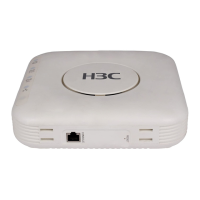4-2
z ACL Categories
z ACL Numbering and Naming
z Match Order
z ACL Rule Numbering
z Implementing Time-Based ACL Rules
z IPv4 Fragments Filtering with ACLs
ACL Categories
ACLs fall into four categories, as shown in Table 4-1.
Table 4-1 ACL categories
Category ACL number IP version Match criteria
WLAN ACLs 100 to 199 IPv4 Wireless client SSID
IPv4 Source IPv4 address
Basic ACLs 2000 to 2999
IPv6 Source IPv6 address
IPv4
Source/destination IPv4 address, protocols over
IPv4, and other Layer 3 and Layer 4 header fields
Advanced ACLs 3000 to 3999
IPv6
Source/destination IPv6 address, protocols over
IPv6, and other Layer 3 and Layer 4 header fields
Ethernet frame
header ACLs
4000 to 4999 IPv4
Layer 2 header fields, such as source and
destination MAC addresses, 802.1p priority, and
link layer protocol type
ACL Numbering and Naming
Each ACL category has a unique range of ACL numbers. When creating an ACL, you must assign it a
number for identification, and in addition, you can also assign the ACL a name for the ease of
identification. After creating an ACL with a name, you can neither rename it nor delete its name.
You cannot assign a name for a WLAN ACL.
For a WLAN and Ethernet frame header, the ACL number and name must be globally unique. For an
IPv4 basic or advanced ACLs, its ACL number and name must be unique among all IPv4 ACLs, and for
an IPv6 basic or advanced ACL, among all IPv6 ACLs. You can assign an IPv4 ACL the same number
and name as an IPv6 ACL.
Match Order
The rules in an ACL are sorted in certain order. When a packet matches a rule, the device stops the
match process and performs the action defined in the rule. If an ACL contains overlapping or conflicting
rules, the matching result and action to take depend on the rule order.
Two ACL match orders are available:
z config – Sorts ACL rules in ascending order of rule ID. A rule with a lower ID is matched before a
rule with a higher ID. If you use this approach, check rule content and order carefully.

